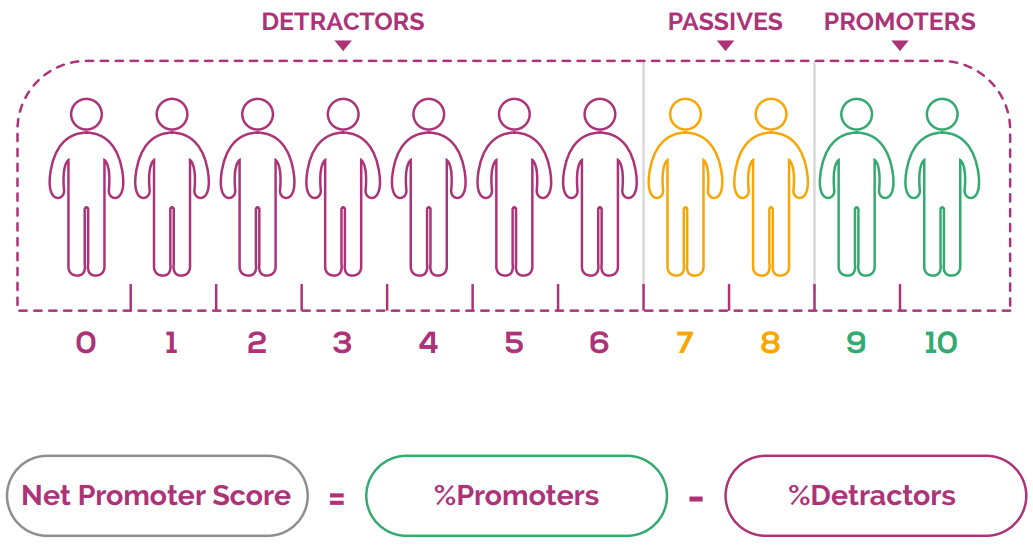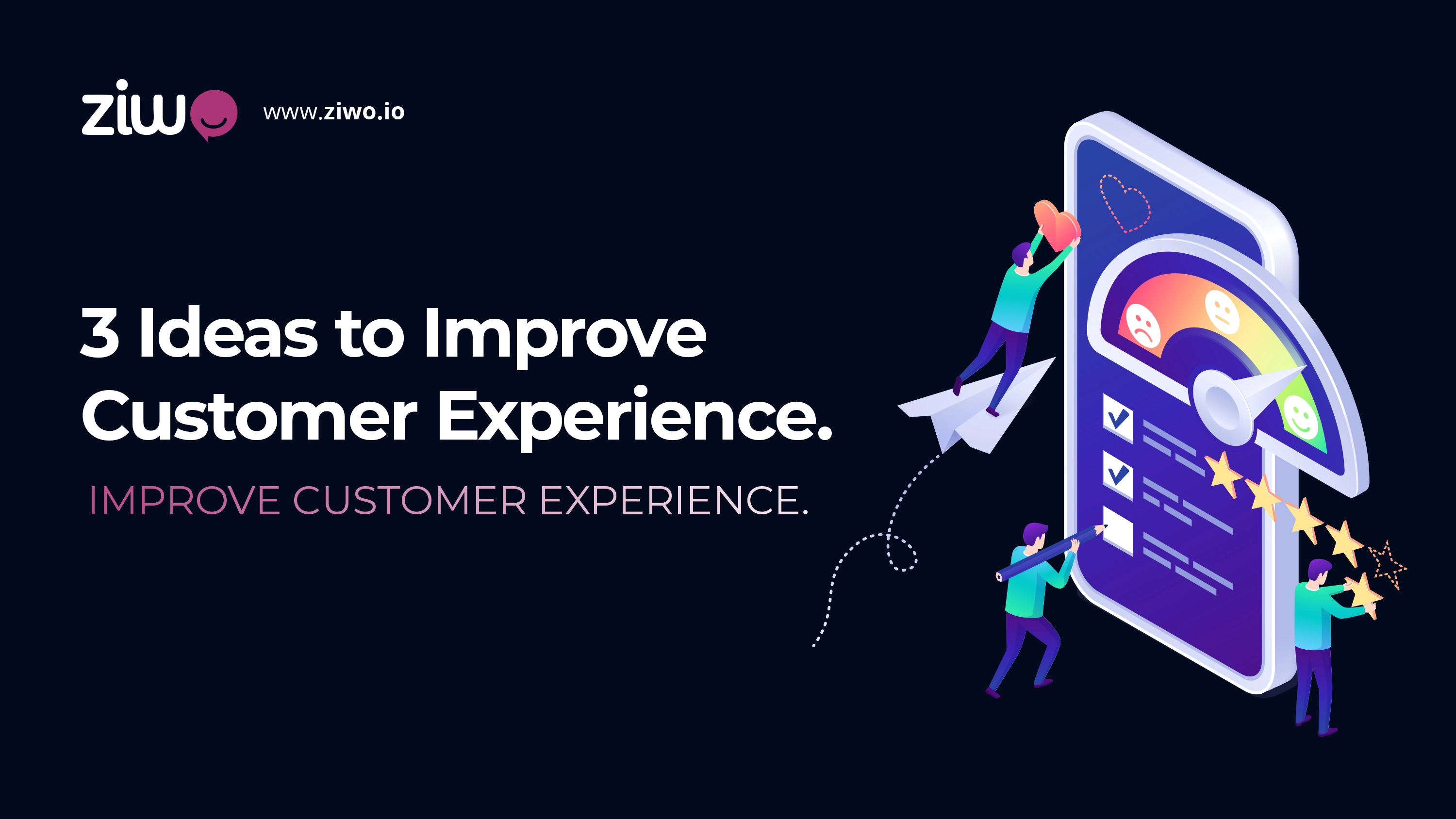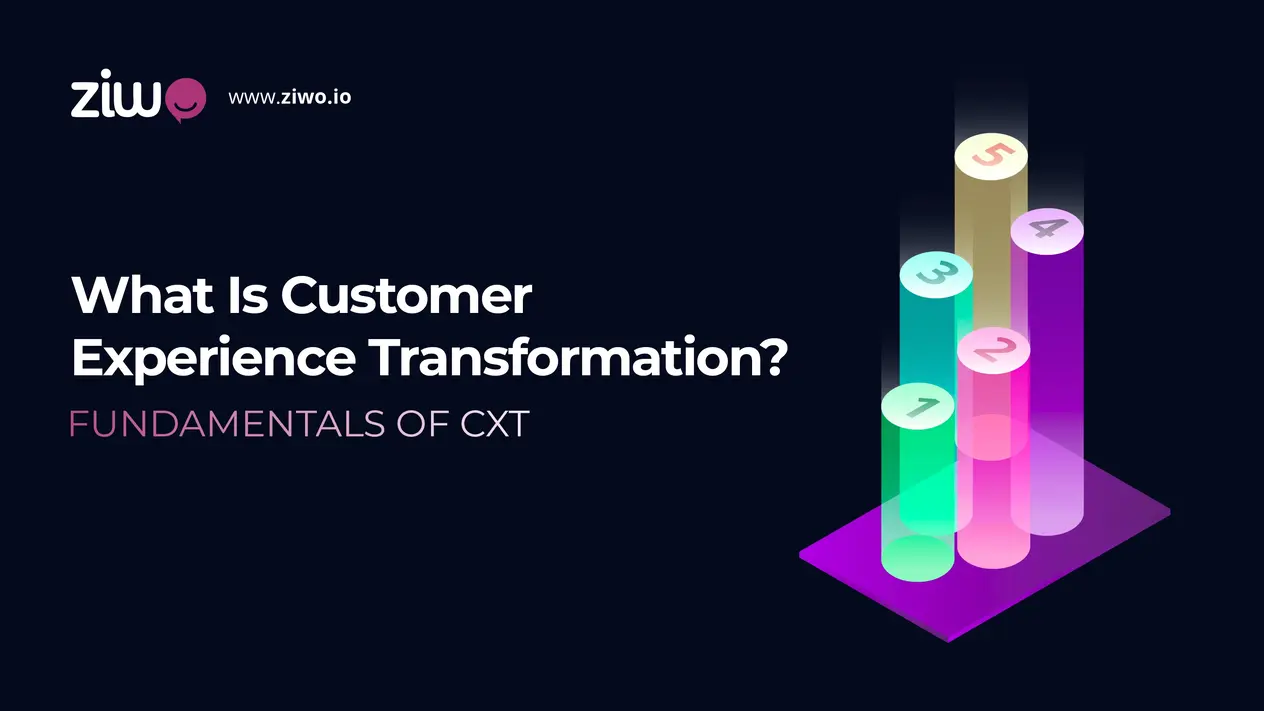KPIs et métriques du centre d'appel pour l'expérience client
Les KPIs du centre d'appel sont essentiels pour toute entreprise, ce sont des indicateurs réels de la façon dont l'entreprise fonctionne afin d'évaluer la performance globale du centre d'appel.
| Catégorie | KPI | Description de l'indicateur | Norme industrielle | Formule | Comment s'assurer que l'ICP est atteint |
|---|---|---|---|---|---|
| Expérience du client | Niveau de service (SL) | Le niveau de service est défini par le nombre d'appels auxquels il est répondu dans un délai donné, généralement appelé "seuil de service". | 80 % des appels sont traités dans un délai de 20 secondes (certains centres d'appels visent 90 % dans un délai de 15 secondes). | SL % = (Nombre total d'appels traités dans le délai seuil SL)/(Nombre total d'appels reçus) X 100%. | Plan de dotation en personnel à long terme approprié tenant compte des heures de pointe et des heures creuses. |
Niveaux de service à travers les canaux
| Canaux | Norme du secteur | Commentaires |
|---|---|---|
| Courriel | 95 % des courriels reçoivent une réponse dans les quatre heures | Les meilleurs centres d'appel visent à répondre à 80 % des courriels dans les 15 minutes. |
| Chat en direct | 80 % des chats sont traités dans les 40 secondes | |
| Médias sociaux | 80 % des contacts traités dans les 20 minutes | |
| SMS/applications de messagerie | 80 % des messages traités dans les 40 secondes |
ÉTUDE DE CAS
Comment accroître la satisfaction des clients en améliorant la SL ?
| L'entreprise | Xpress Telecommunication |
| Défis à relever |
|
| Solution |
|
| Résultats |
|
| Catégorie | ICP | Description de l'indicateur | Norme de l'industrie | Formule | Comment s'assurer que l'ICP est atteint |
|---|---|---|---|---|---|
| Expérience du client | Assurance qualité (QA) | Test des fonctionnalités de l'outil et des cas d'utilisation sur un échantillon hebdomadaire ou mensuel aléatoire couvrant différentes équipes, files d'attente et compétences des agents. | Le score de qualité doit se situer entre 75 et 90 %. | Outil d'assurance qualité adéquat en plus d'une équipe d'assurance qualité dédiée (heureusement, avec ZIWO, nous avons cet outil prêt à l'emploi). | |
| Expérience client | Résolution au premier contact (RPC) | Capacité d'un centre de contact à résoudre les problèmes, les questions ou les besoins des clients dès le premier appel, sans qu'aucun suivi ne soit nécessaire. aucun suivi n'est nécessaire. |
70-75% | FCR % = (Nombre total d'incidents résolus au premier contact)/(Nombre total d'incidents reçus) X 100% (Les incidents peuvent être des appels, des courriels, des chats, des messages, etc.) | Des plans ACD efficaces et intelligents où les appels sont acheminés vers les files d'attente appropriées et où les agents sont affectés en fonction de leurs compétences. Formation continue de vos agents. Pour les centres de contact omnicanaux, il est préférable de mesurer les résultats par canal. |
| Expérience client | Net Promoter Score (NPS) | Cet indicateur est un outil simple mais très puissant pour mesurer la satisfaction et la fidélité de vos clients en posant une seule et unique question. | Nous espérons tous dépasser 10 ! | 1-Promoteurs = répondants donnant un score de 9 ou 10 2-Passives = répondants donnant un score de 7 ou 8 3-Détracteurs = répondants donnant une note de 0 à 6 |
Concentrez-vous sur la connaissance de vos détracteurs, c'est là que se trouvent nos points de douleur. Assurez-vous que vous disposez d'une carte de parcours client sans faille. -Programmes de fidélisation. -Appréciez vos promoteurs et adaptez des remises, des cadeaux ou des offres spéciales à leur intention. |
Exemple de NPS :
"Quelle est la probabilité que vous recommandiez l'entreprise/la marque/le produit X à un ami/un collègue/un parent ?
On peut répondre à cette question sur une échelle de 11 points, allant de 0 (pas du tout probable) à 10 (extrêmement probable).

Mesures et indicateurs de performance pour l'initiation des appels
| Catégorie | KPI | Description de l'indicateur | Norme industrielle | Formule | Comment s'assurer que l'ICP est atteint |
|---|---|---|---|---|---|
| Initiation de l'appel | Taux de blocage | Pourcentage d'appels bloqués | Il doit être maintenu à un niveau aussi bas que possible (inférieur à 1 %). | SL % = (nombre total d'appels traités dans le délai seuil SL)/(nombre total d'appels reçus) X 100 %. | Plan de dotation en personnel à long terme approprié tenant compte des heures de pointe et des heures creuses. |
| Initiation de l'appel | Taux d'abandon | Cet ICP du centre d'appels est une mesure des appels qui ont été abandonnés dans la file d'attente IVR + | Le taux acceptable se situe entre 2 % et 5 %. Un taux supérieur à 5 % est considéré comme problématique. | ((Nombre d'appels proposés - Nombre d'appels traités)/(Nombre d'appels proposés)) x 100 | Une bonne planification de la main-d'œuvre (roaster) (avoir suffisamment d'agents pour couvrir les heures de pointe). -Meilleure prévision et programmation des pics d'appels. -Utilisation de la technologie de rappel. -Améliorer les messages en file d'attente et éviter les options IVR trop longues (arbres). |
Pourcentage d'appels bloqués (taux de blocage)
Cet ICP du centre d'appels a un impact important sur la satisfaction des clients. Il est défini comme le pourcentage d'appelants entrants qui ont reçu la tonalité d'occupation lors de leur appel et est souvent causé par l'un des éléments suivants
Productivité des agents KPIs et métriques du centre d'appel
| Catégorie | KPI | Description de l'indicateur | Norme industrielle | Formule | Comment s'assurer que l'ICP est atteint |
|---|---|---|---|---|---|
| Productivité des agents | Temps de traitement moyen (AHT) | Cet ICP est une mesure clé car il vous indique le temps nécessaire pour traiter un nouvel appel et pas seulement le temps de conversation. | Ce temps varie considérablement en fonction du secteur et de la taille de l'entreprise. | = Temps total de conversation + Temps total d'attente + Temps total d'enveloppement | -Créer des scripts pour le centre d'appel et des réponses types pour les questions fréquemment posées (FAQ) -Unification de tous les outils utilisés par l'agent en un seul écran -Enregistrement de tous les appels pour la session de formation de l'agent (Conseil : recherchez toujours des durées d'appel très courtes et très longues). Analyse des causes profondes pour les appels répétés/élevés en attente |
| Temps d'attente ou travail après l'appel (ACW) | Le temps d'enveloppement est également connu sous le nom de travail après appel (TCA) et mesure le temps moyen qu'il faut aux agents pour effectuer le travail associé à un appel une fois qu'il est terminé. | Il est recommandé de le situer entre 10 et 15 secondes. | Temps moyen de travail après appel = Temps nécessaire pour effectuer le travail après appel pour tous les appels / Nombre total d'appels ayant reçu une réponse | Vos agents doivent passer suffisamment de temps pour effectuer ce travail avec précision. Cependant, si le temps d'APA est trop élevé, il se peut qu'il y ait autre chose. La valeur du temps de traitement peut être saisie dans votre plateforme de centre d'appels sur la base de votre calcul historique de l'ACW moyen et de son impact sur la SL. | |
| Vitesse moyenne de réponse (ASA) | Cette mesure essentielle permet aux centres d'appels d'évaluer le temps que mettent les agents à répondre à un appel en attente. Lorsque cette mesure est trop élevée, cela peut signifier que les agents prennent trop de temps pour répondre aux appels ou pour prendre de nouveaux appels. | Plus l'agent répond rapidement à l'appel, mieux c'est. L'ASA recommandée est de 3 à 4 sonneries. | (Temps d'attente total pour les appels traités / Nombre total d'appels traités)/- Nombre d'appels traités | ||
| Taux d'occupation | L'occupation est calculée en pourcentage et représente le temps que les conseillers consacrent à des activités liées aux appels alors qu'ils sont connectés et censés prendre des appels. L'activité liée aux appels comprend le temps de parole, le temps d'attente et le temps de conclusion. Elle est souvent appelée "temps productif". | (Temps total de traitement des contacts/temps total enregistré) x 100 | |||
| L'utilisation | L'utilisation représente le temps que les conseillers passent à se connecter, à traiter et à attendre des contacts, tout en étant présents dans le centre d'appel. | (Temps total de connexion/Temps total de travail) x 100 |
1) Temps de traitement moyen (AHT)
L'objectif de nombreux centres d'appel est de réduire le temps moyen de traitement, de maximiser l'efficacité et d'augmenter le SL. Toutefois, cela peut avoir un impact négatif sur la qualité du service.
2. le temps de traitement (Wrap Up Time ou After Call Work - ACW)
Le temps de clôture ou le temps de travail moyen après appel est un excellent moyen de mesurer la productivité des agents des centres d'appel. Le temps de travail moyen après l'appel mesure le temps moyen nécessaire aux agents pour effectuer le travail associé à un appel une fois qu'il est terminé.
Vous avez besoin que vos agents passent suffisamment de temps pour effectuer ce travail avec précision et minutie. Toutefois, si vous constatez que la durée moyenne du travail après appel est trop élevée, il se peut qu'il y ait un autre problème.
La valeur du temps de clôture ou du temps de travail après appel peut être saisie dans votre plate-forme de centre d'appel sur la base de votre calcul historique du temps de travail après appel moyen et de son impact sur la rapidité de réponse.
3) Vitesse moyenne de réponse (ASA)
Cette mesure essentielle permet aux centres d'appels d'évaluer le temps que mettent les agents à répondre à un appel en attente. Lorsque cette mesure est trop élevée, cela peut signifier que les agents prennent trop de temps pour répondre aux appels ou pour prendre de nouveaux appels.
ÉTUDE DE CAS
Comment améliorer le SL en mettant en œuvre l'ICP ASA ?
| L'entreprise | MarkaVIP |
| Enjeu |
|
| Solution |
|
| Résultats |
|
10- Occupation et utilisation
De nombreux professionnels pensent à tort que l'occupation et l'utilisation sont identiques alors qu'il s'agit de mesures complètement différentes.
Qu'est-ce que l'occupation ?
Le taux d'occupation d'un centre de contact se situe généralement entre 80 et 85%. Si votre taux d'occupation se situe à ce niveau, il est probable que votre équipe de planification des ressources fasse du bon travail. Toutefois, si le taux d'occupation est constamment supérieur à 85 %, vous risquez de provoquer l'épuisement des agents.
Qu'est-ce que l'utilisation ?
Comme le taux d'occupation, le taux d'utilisation est calculé en pourcentage. Cependant, elle diffère de l'occupation car l'utilisation représente plutôt le temps que les conseillers passent à se connecter, à traiter et à attendre des contacts lorsqu'ils sont présents dans le centre d'appels.
TOP 9 DES MOYENS D'EXPLOITER AU MIEUX VOS MÉTRIQUES/KPI ?
1. Posez-vous toujours la question : "Qu'est-ce que je veux atteindre avec ce KPI ?"
2. Posez-vous toujours la question suivante : "Pourquoi ai-je besoin de cette information ou de ce rapport ? "Pourquoi ai-je besoin de cette information ou de ce rapport ?"
3. Réexaminez sans cesse vos ICP, il s'agit d'un processus d'évaluation permanent.
4. Ne vous en tenez pas à vos ICP historiques parce que c'est ce que nous avons toujours fait.
5. Demandez à vos agents : "Qu'est-ce qui vous empêche d'atteindre vos objectifs ?"
6. Réfléchissez à l'indicateur qui convient à votre secteur.
7. Responsabilisez vos agents et motivez-les à en faire plus et à aller plus loin.
8. Produisez des résultats et des rapports compréhensibles par tous.
9. Soyez aussi simple que possible.






